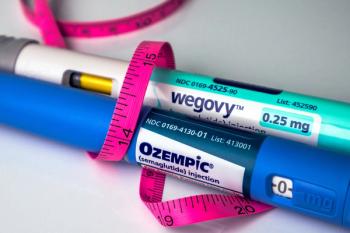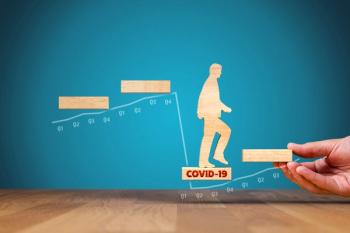
FDA approves Benlysta for SLE, Horizant for RLS
Systemic lupus erythematosus is a serious, potentially fatal autoimmune disease that affects between 300,000 to 1.5 million Americans of all races. Restless legs syndrome is a disruptive neurologic disorder that affects up to 10% of all Americans.
Key Points
(Benlysta, Human Genome Sciences)
Systemic lupus erythematosus (SLE) is a serious, potentially fatal autoimmune disease that affects between 300,000 to 1.5 million Americans of all races; for African-American women, the incidence is 3-fold higher. On March 9, 2011, FDA approved belimumab intravenous injection for the treatment of adult patients with active, autoantibody-positive SLE who are currently receiving standard therapy.
The first of the 3 studies was integral in identifying the target population of autoantibody-positive SLE patients. The 2 subsequent studies randomly assigned a total of 1,684 patients with autoantibody-positive, active disease (defined as a SELENA-SLEDIA score ≥6) to receive belimumab 1 mg/kg or 10 mg/kg plus standard therapy or placebo plus standard therapy. In both trials the proportion of patients responding to therapy was significantly higher in the belimumab 10 mg/kg group than in the placebo group. There was no statically significant difference in response rate between patients receiving belimumab 1 mg/kg and placebo.
Safety. The most commonly reported adverse reactions (occurring in ≥5% of patients) were nausea, diarrhea, pyrexia, nasopharyngitis, bronchitis, insomnia, pain in extremity, depression, migraine, and pharyngitis. In these studies, a greater number of deaths were reported with belimumab (11) than with placebo (3), with a total of 14 deaths occurring during the treatment periods. Explanations for these deaths included infection, cardiovascular disease, and suicide; however, no single cause predominated. Patients being treated for a chronic infection should not begin therapy with belimumab, as serious infections have been reported.
Dosing. The recommended dose of belimumab is 10 mg/kg every 2 weeks for the first 3 doses and every 4 weeks thereafter. Belimumab should be administered over the course of 1 hour. Premedication for prophylaxis against infusion and hypersensitivity reactions should be considered.
Gabapentin enacarbil extended-release tablets
(Horizant, GlaxoSmithKline and Xenoport)
Restless legs syndrome (RLS) is a disruptive neurologic disorder that affects up to 10% of Americans. On April 6, 2011, FDA approved gabapentin enacarbil extended-release tablets for the treatment of moderate-to-severe RLS in adults. Gabapentin enacarbil is not recommended for patients who are required to sleep during the daytime and remain awake at night.
Efficacy. Gabapentin enacarbil efficacy was established in two 12-week clinical studies of adults diagnosed with RLS using the International Restless Legs Syndrome (IRLS) Study Group Diagnostic Criteria. In study 1, patients received 1,200 mg of gabapentin enacarbil (n=112) or placebo (n=108) taken once daily with food. In study 2, patients received 600 mg (n=112) and 1,200 mg (n=111) of gabapentin enacarbil or placebo (n=108) taken once daily at about 5 p.m. with food. Efficacy was evaluated using the IRLS Rating Scale and Clinical Global Impression of Improvement (CGI-I) scale. In both studies, statistically significant improvements between the gabapentin enacarbil 600 mg and placebo groups were observed at week 12 for both scales.
Safety. In clinical trials, the most common adverse reactions (≥10% and at least 2 times the rate of placebo) seen with gabapentin enacarbil were somnolence/sedation and dizziness. Gabapentin enacarbil may cause significant driving impairment. As with other antiepileptic medications, gabapentin enacarbil may increase the risk of suicidal thoughts or behavior. Patients should be monitored for depression, suicidal thoughts or behavior, or any unusual changes in mood or behavior.
Dosing. The recommended daily dose for gabapentin enacarbil is 600 mg once daily taken with food at about 5 p.m. Gabapentin enacarbil is not interchangeable with other gabapentin products because of differing pharmacokinetic profiles. If the dose is not taken at recommended time, the next dose should be taken the following day. For patients with renal impairment (creatinine clearance 30 to 59 mL/minute), 600 mg of gabapentin enacarbil should be administered on day 1, day 3, and then every day thereafter. It is not recommended for patients with a creatinine clearance <30 mL/minute. Patients are to be instructed not to crush, cut, or chew tablets.
Craig I. Coleman is associate professor of Pharmacy Practice, University of Connecticut School of Pharmacy, Storrs, Conn., and director of the Pharmcoeconomics and Outcomes Studies Group, Hartford Hospital.
Newsletter
Pharmacy practice is always changing. Stay ahead of the curve with the Drug Topics newsletter and get the latest drug information, industry trends, and patient care tips.




